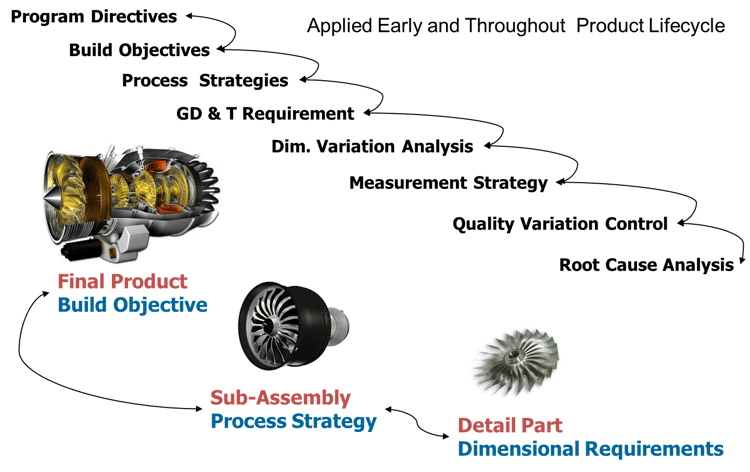 Today, the focus of manufacturing quality has shifted to a discussion of “affordable” quality. The question asked by manufacturers is not how to achieve quality, but how to achieve it within cost and time constraints.
Today, the focus of manufacturing quality has shifted to a discussion of “affordable” quality. The question asked by manufacturers is not how to achieve quality, but how to achieve it within cost and time constraints.
Successful manufacturers achieve affordable quality by using simulation-based dimensional engineering (DE) and tolerance analysis processes to address quality problems before they occur.
Many products are subjected to 3D-model-based tolerance analysis as a part of a DE process. Such analyses help engineers understand dimensional fit characteristics and quality status at all stages of design and production. This is not new or revolutionary. However, a “closed-loop” DE process, which relies on visualization tools and techniques, enables engineers to define and refine objectives across the product lifecycle so they can achieve affordable quality.
Technology tools allow manufacturers to appraise design, fabrication and assembly robustness by evaluating GD&T, tooling and build sequencing – all before production. They produce 3D-model-based tolerance simulations that identify areas of concern, potential failure rates, and statistical results, such as percent out of specification, for each measurement. Sensitivity analyses review each tolerance as it relates to each measurement and identify its percentage contribution or affect on each measurement.
Together, a closed-loop DE process and 3D-model-based tolerance analyses enable affordable quality by minimizing the following costs:
A closed-loop DE process includes the development of quality plans for each product using tools and processes that are well-established, speedy and efficient.
Testing, evaluation and inspection of quality are included as critical components of a closed-loop DE process – again, through an effective, resource-efficient process.
With the capability for users to “loop back” and make adjustments during the “as-built” phase of a product’s lifecycle, the closed-loop DE approach minimizes internal costs associated with scrap and rework.
The use of a closed-loop DE process, with its checks and balances, minimizes the number of quality defects – minimizing returns, repairs and recalls.
In short, a closed-loop DE process with tolerance simulation tools and techniques enables engineers to optimize the balance between time, cost and quality so they can achieve quality – affordably.